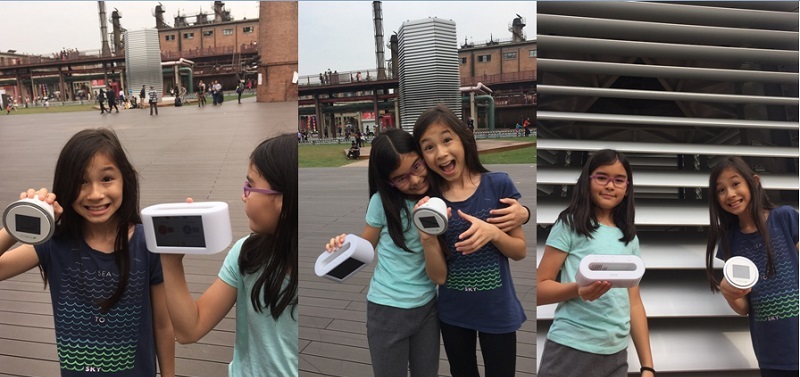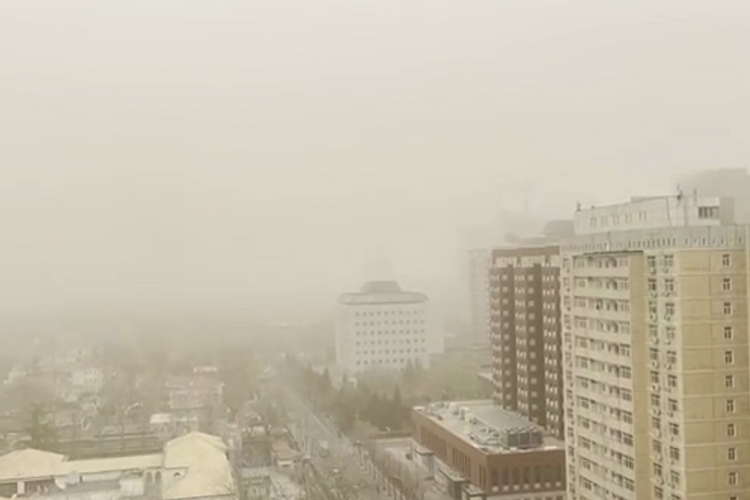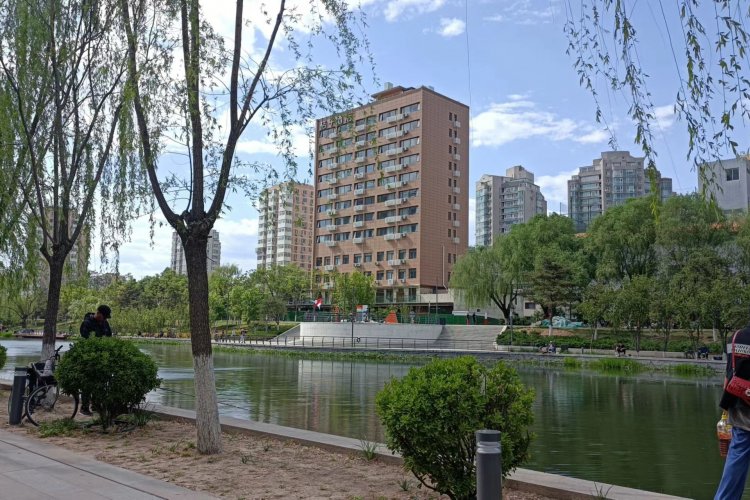Smoggy Setback: Pollution-Busting Tower Falls Short of Promise
Well, so much for the supposed "smog free tower."
Though it was billed as a way to effectively filter pollutants from Beijing's air, Dutch designer Daan Roosegaarde's high-profile invention did not appear to make any difference at all to the air around it in the amateur testing we did with reliable air quality montiors.
Studio Roosegaarde released a statement that put a more positive spin on the news, saying it effectively made the air 55 percent cleaner in the vicinity of the tower.
Frankly, we're on the fence about Roosegaarde's "art" – on the one hand, as an actual solution to Beijing's air pollution problem, it's pure snake oil. But as to its secondary effect – raising awareness about air pollution issues, we'd have to say: Mission Accomplished.
First of all, to do away with the pesky issue of "does it work," the simple answer (no matter how you slice it) is "no."
The China Forum of Environmental Journalists (via AllChinaTech), said the tower's cleansing of PM2.5 was sporadic, lowering pollutants only within a five-meter radius of the machine in testing done in early November.
But even before the structure was unveiled, Roosegaarde cautioned against it being depicted as a miracle cure for smog, saying it was instead meant to raise awareness about air quality. That said, even his recent optimistic estimates fall short of the 75 percent pollution reduction he promised in interviews with the Beijinger and other publications when the project was first announced.
Making its debut this past fall near the 798 Art District as part of Beijing Design Week, the Smog Free Tower was also set to later travel to four Chinese cities for the Smog Free Project China tour. In an email to the Beijinger, Studio Roosegaarde said the tour will still go forward, though the exact dates and locations have yet to be confirmed.
Wary of the age-old problem of the messenger clouding the message, we wanted to test the thing ourselves. Over the October 1 holiday we brought our two very reliable home air monitors – the Airvisual Node and the Origins Laser Egg – to the tower itself in its perch in the 798 Art District.
Disclaimer: We're not scientists, and air quality professionals will bicker that the monitors we used lack the true scientific accuracy or precision equipment that costs 10 to 100 times more than these consumer devices. However, using comparison data from pro-grade air monitor data released by the US embassy and the Chinese government, we’ve found these devices to be pretty darn close.
So, equipped with those as well as some enthusiastic volunteers, we tried some real life on-site comparisons, taking measurements every 10 meters starting from approximately 40 meters away from the tower.
For each reading, we stood for 5 minutes and took readings from the Origins and Airvisual machines, then snapped a photo. Due to our poor photo skills, the readings on the monitors are not visible in the photos, so you’ll have to take our word for it (we wrote them down to track).
First we took a baseline reading: the air outdoors that day was AQI 160 on one monitor, AQI 168 on the other. This was consistent throughout our walk throughout the neighborhood before approaching the machine.
Here were the readings we got as we got closer:
30m away from tower: 159, 166
20m away from tower: 156, 169
10m away from tower: 157, 168
Directly next to the machine: 157, 171
With monitors pressed right up against machine’s outflow vents: 156, 168

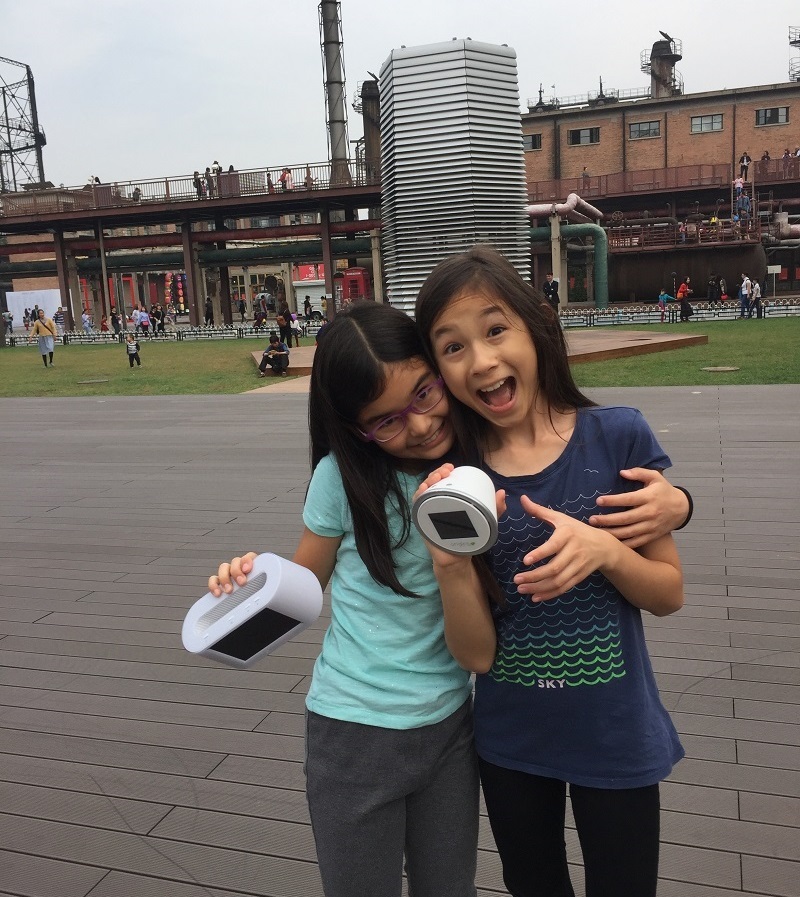
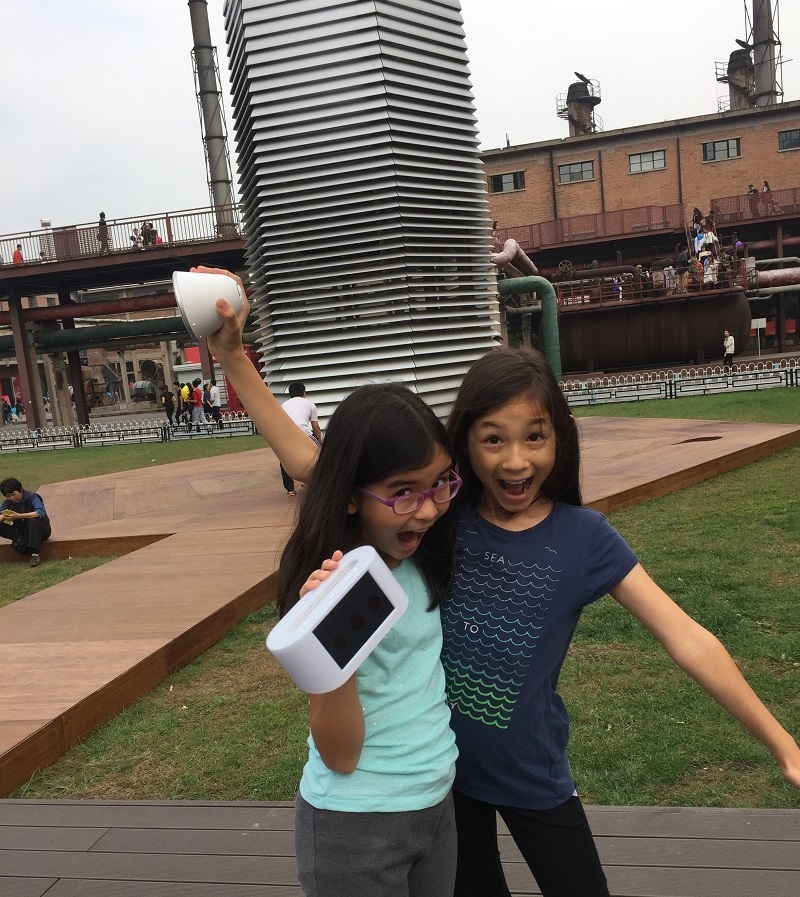

The result? Almost no difference at all.

These fluctuations could be attributed to variations within the monitors themselves, or perhaps slight changes in wind conditions. However, all excuses aside, we're convinced that this tower does not do much (if anything) to improve air quality in an outdoor environment.
Some of our readings even showed the pollution grew worse right next to the tower, not better. That could be attributed to the tower's design. In a 2014 interview with the Beijinger, when the project was first announced, Studio Roosegaarde detailed how the invention would work:
"The smog will be removed using the principle of positive ionization. Smog particles and polluted air will enter the device’s system. A high voltage electrode gives the particles a positive charge, which makes them move to a negative collector electrode. The smog particles settle on this collector electrode until they form harmless coarse dust. Then purified air leaves the system."
That process of sucking the smog into the tower could explain why our (admittedly amateur) readings indicated the pollution was in fact worse immediately next to the device, not better: the machine was actually drawing particulate matter towards it.
To clarify: The machine did in fact collect particulate matter from the air -- lots of it. However, it was not enough to make any significant realistic difference in an outdoor environment (if the machine were to be placed in an enclosed indoor environment, we have no doubt that it would clear the air of particulate matter).
Despite its shortcomings, the CFEJ has not called for the project to be scrapped entirely, instead calling for a "series of activities" to take place near the structure designed to inform onlookers about air quality and the environment. Studio Roosegaarde tells the Beijinger that one of those activities will be a dialogue about smog free solutions (click here for more information).
The studio also touted the "smog diamonds" that Roosegaarde said would be made from compressed pollutants extracted from the air in the tower.
RELATED: Your Mask Don't Mean Sh*t if it Ain't Got That Fit
A statement from the studio read: "The smog particles collected from the Smog Free Tower in Beijing are used to make a special limited edition of 300 Smog Free Rings as a tangible souvenir of clean air. By sharing a Smog Free Ring, you donate 1,000-meters-cubed of clean air to the city."
However, given the project's latest setbacks, we wonder if that ecologically themed jewelry has also lost its luster. However, it's worth noting that Roosegaarde never promised the device would be a miracle cure for smog, and that in many interviews he said the key objective was to raise awareness about air quality. In that regard, given the amount of publicity the project has been given, the project can be called a success.
Images: Michael Wester
Related stories :
Comments
New comments are displayed first.Comments
![]() admin
Submitted by Guest on Tue, 05/16/2017 - 08:24 Permalink
admin
Submitted by Guest on Tue, 05/16/2017 - 08:24 Permalink
Re: Smoggy Setback: Pollution-Busting Tower Falls Short of...
Thank you for your interest in Smog Free Project! We appreciate your effort, but here we provide official scientific research done by Eindhoven University of Technology that proves the positive results of Smog Free Tower, 70% of the ingested PM10 and up to 50% of the ingested PM2.5, to be precise. Contact us anytime if you have questions!
We would love to see this in person in an outdoor environment outside a laboratory.
In the case of the installation at 798 described above, it simply was making no difference
Validate your mobile phone number to post comments.

